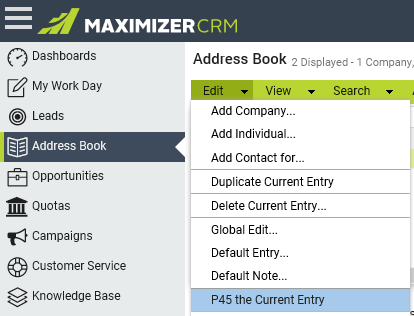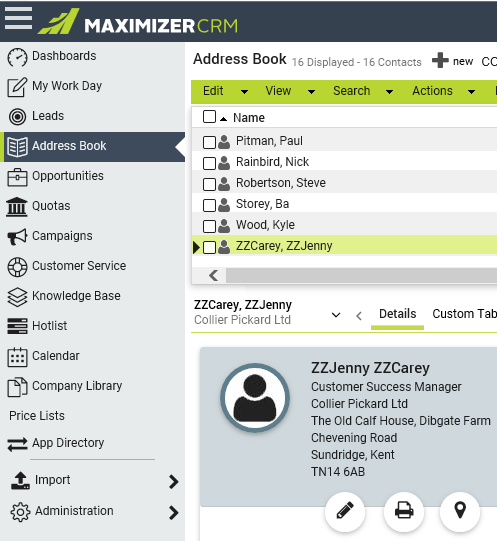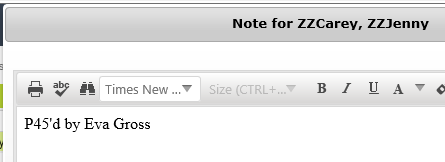What do you do when someone leaves a company? Do you delete them from your Maximizer CRM system or do you make a note against their record? Do you have a User-defined Field (UDF) for people who have left or do you have some other way of categorising them? In short, how do you keep tabs of the comings and goings of company employees without losing or compromising important information surrounding your relationship with them?
CRM systems are great for providing a 360-degree view of your customer relationships, and each individual dealing you’ve had with a contact will help shape the bigger picture of your relationship with that company as a whole. So if you delete an address book entry from your CRM system, you will lose any visible records of any interactions you’ve had with them over time. Deleting them may also cause confusion internally as to what happened to that particular person and, indeed, the information associated with them.
Conversely, if you keep them in your CRM system, there are certain housekeeping procedures you should follow in order to ensure data integrity. For example, you want to avoid sending them emails, calling them, sending them your brochures etc.
That’s why here at Collier Pickard we’ve designed an add-on called “The P45 button.” It sits neatly within the Edit drop-down list within the Address Book area:
By clicking “P45 the Current Entry”, several things happen:
- The contact record’s First Name and Last Names gets pre-fixed with “ZZ” so that they end up at the bottom of the company’s address book list (and “out of the way”):
- The Do Not Solicit By field also gets automatically updated with Email, Fax, Phone, Print.
- This ensures no further correspondence with that person should occur. So if they accidentally get scooped into an email marketing list in Maximizer’s campaign manager, they won’t receive the email even though the email has been sent.
- Furthermore, you will also be warned when phoning the contact from within the phone dialogue box
- A note is made against that contact record, which makes it easy to identify everyone who has been P45’d, for example, within a time period:
You can also configure up to 5 UDFs (Alphanumeric, Numeric or Table) as part of the P45 process.
So, for example, if you have a mailings UDF to track contacts who receive your eNewsletters, the P45 add-on can be configured so that any values selected are remove (so that they no longer receive “eNewsletters”, “Christmas Card” etc.) and then a further value-added (e.g. “dropped from lists”).
Furthermore, adding ZZ to people’s first and last names means we can still easily identify everyone “live” on the database. Simply search for Last Name > Range > “A to ZY” and you will have everyone apart from those who have been ZZ’d.
We use this add-on internally and have found it very easy to use, yet effective as all historical notes and documents are kept on record. And if you accidentally “P45” someone, it’s not the end of the world, as it’s easy to edit their details simply by removing the ZZ’s and correcting their Do Not Solicit By field.
Do you think this add-on would come in handy for your company? Then contact us now to find out more!








